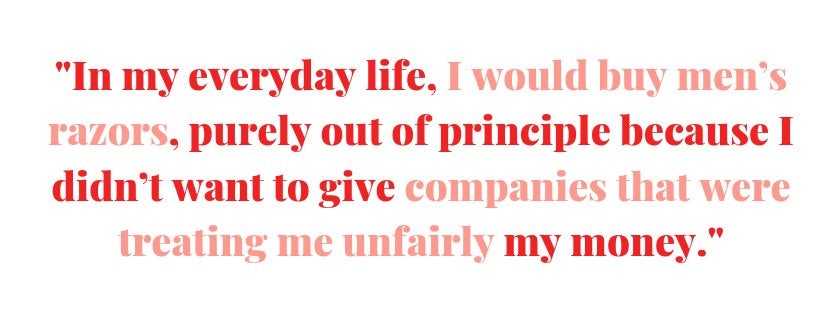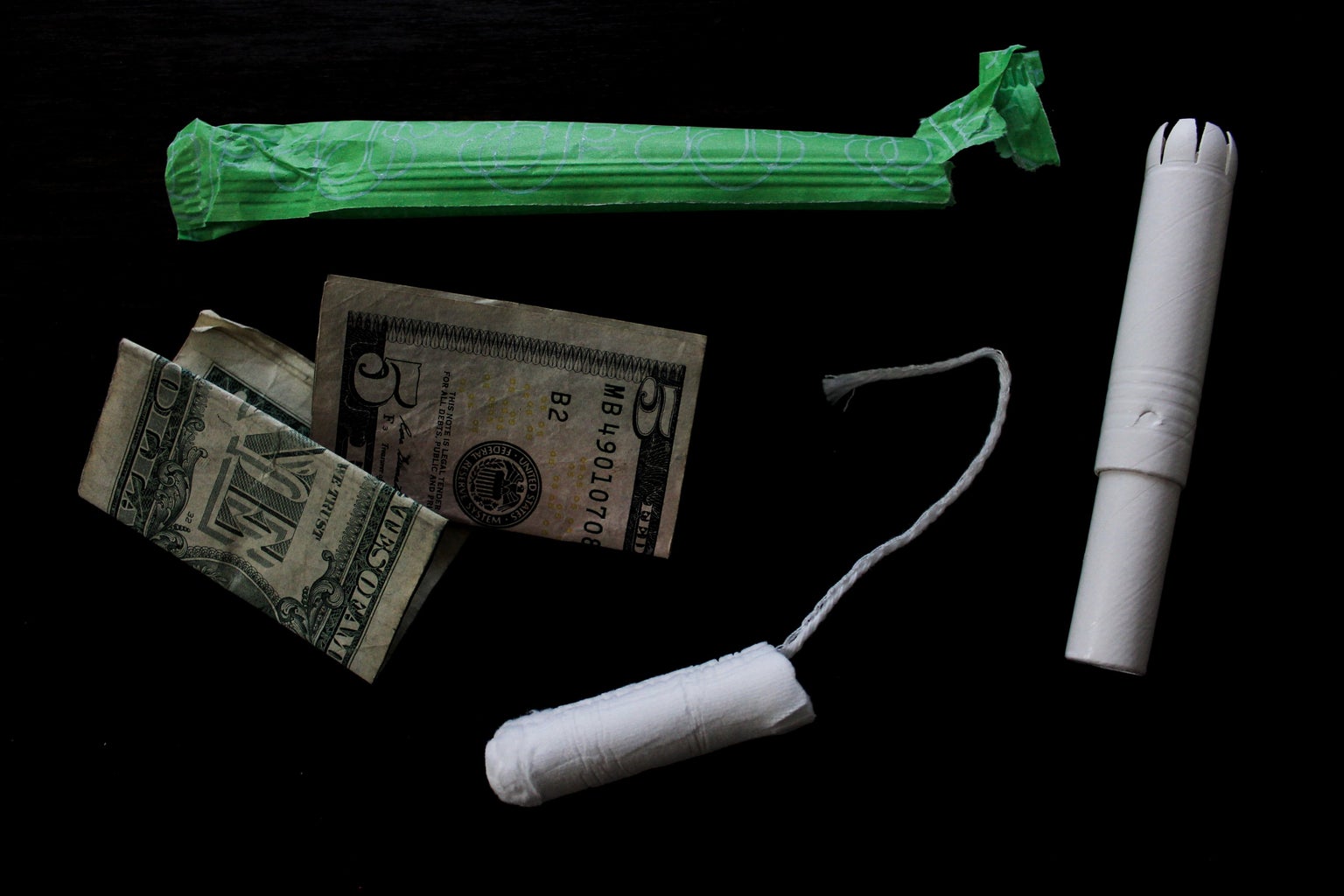Gender-based marketing refers to how company’s manufacture items to fit gender-normative stereotypes in order to appeal to women. This leads to gender-specific pricing in which items marketed for female consumers are more costly compared to items marketed for male consumers, otherwise known as the Pink Tax. It’s the reason why female razors are brightly colored and packaged to have a more feminine look, an increased price range, and lessened quality in comparison to the average men’s razor. I’ve felt the struggle while at a store looking to buy a pack of razors, seeing that the men’s razor packages included more refillable razor heads and more blades per razor head for the equal or less-than-equal pricepoint.

A branch of the Pink Tax is the Tampon Tax, which is the unnecessary luxury sales tax applied to menstrual products. Grocery items and prescriptions are considered non-luxury necessities, but menstrual care products are categorized as luxury necessities and are taxed as luxury items. I would love to know how bleeding continuously for a week while experiencing PMS or PMDD became a luxury? If men were the ones who involuntarily bled from their weenies, do you think they would consider it a luxury? This is literally a useless extra cost that those who get periods have to pay for with no real justification.

There is no protection that prevents Pink Tax from being charged by private sellers, so they have discretion over their prices. Current states that don’t tax menstrual products — excluding those with eliminated sales tax — are Connecticut, Florida, Illinois, Nevada, New York, Ohio, Rhode Island, Utah, and Washington D.C. An argument in defense of the practice is that taxing various feminine personal care products is reasonable because by paying for the look of the product, women are therefore paying for that superficial value or attractive feature. But these products are identical in manufacturing and application, other than the change of scent or color. Women are categorized and generalized to pay for a product just because it’s pink so that companies can exploit the market to earn a profit.
When considering the gender wage gap; women make less than men, and women of color make less than white women. The Pink Tax largely affects marginalized communities because it is an added cost to the income that women of color are already disadvantaged from earning. The New York City DCA found that women’s products cost more than men’s, including the following:
- 13% more for personal care products
- 8% more for adult clothing
- 8% more for senior/home health care products
- 7% more for toys and accessories
- 4% more for children’s clothing
By companies cornering female customers into buying feminine products that correlate with gendered assumptions, they other women into having to pay for things that are unfairly more expensive compared to the price male customers pay. Menstrual and other feminine products alike should just have a normal sales tax similar to a non-luxury necessity, period. State bans on the Pink Tax have created progress, but a majority of the U.S. still stigmatizes female reproductive healthcare.



